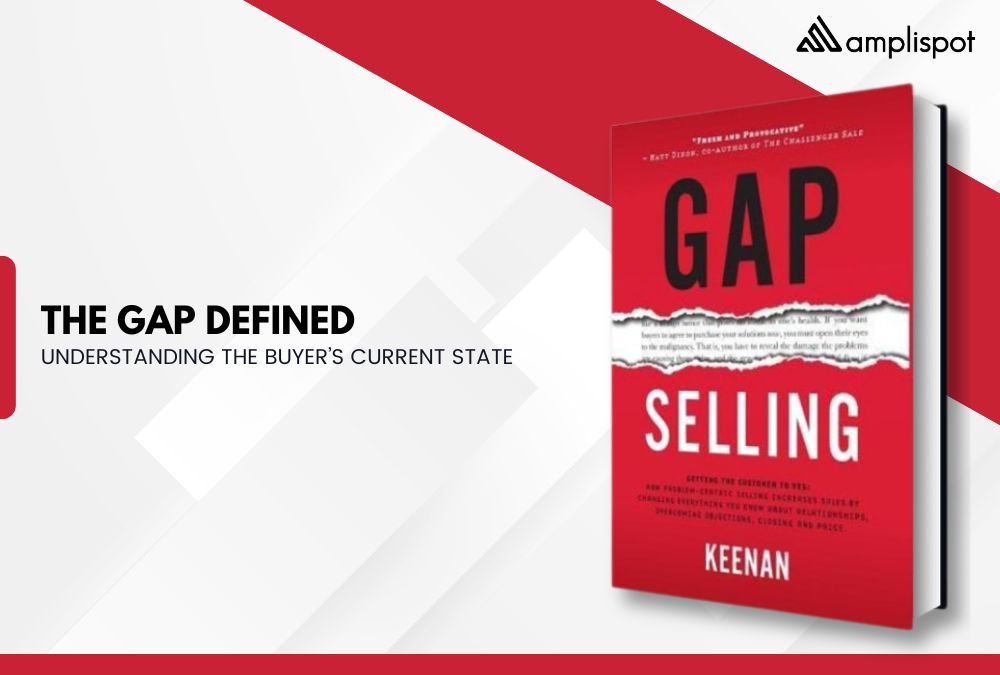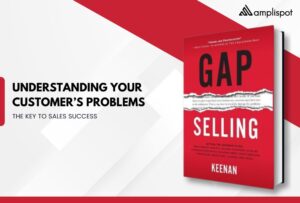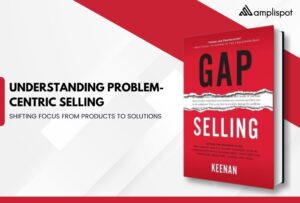Chapter 2
In Chapter 2 of Gap Selling by Keenan, the author emphasizes the importance of understanding the buyer’s current state before trying to sell them a solution. The “gap” is defined as the difference between the buyer’s current state (where they are now) and their future state (where they want to be). This gap is what your solution aims to bridge, but to do that effectively, you must first understand the starting point—the current state—of the buyer’s situation. Without this foundational understanding, your solution will miss the mark, no matter how well it’s pitched.
1. What Is the Current State?
The current state is the buyer’s present reality, encompassing:
- Struggles: The challenges and frustrations they are dealing with.
- Inefficiencies: Processes, tools, or operations that are not working well.
- Pain Points: The negative consequences they are experiencing because of their struggles and inefficiencies.
Buyers may not always be fully aware of the depth or root cause of their problems, which is where your role as a salesperson becomes critical. You must uncover not just the symptoms of their issues but the underlying causes. By doing this, you position yourself as someone who solves problems rather than just sells a product.
2. Why Understanding the Current State Matters
Understanding the current state is essential for a successful sales conversation. Here’s why:
2.1 Identifying Real Problems
Buyers often focus on symptoms rather than the root causes of their challenges. For example, they may mention that their team is “missing deadlines,” but the root cause might be poor communication or inefficient tools. As a salesperson, you need to dig deeper to uncover the actual problems they’re facing.
2.2 Context for the Gap
To define the gap between where the buyer is and where they want to be, you need a clear understanding of their current state. This gap is what your solution will help bridge. Without understanding the gap, you’ll struggle to present your solution as the key to solving their problems. Understanding the current state allows you to identify how your solution can close the gap between their struggles and desired outcomes.
2.3 Building Credibility
When you demonstrate a clear and deep understanding of the buyer’s challenges, you build trust and credibility. This sets you apart from other vendors who might simply pitch products without understanding the buyer’s pain. Buyers are more likely to trust salespeople who understand their issues and offer solutions tailored to their unique needs, rather than generic pitches based on product features.
3. How to Uncover the Current State
To explore the current state effectively and understand the buyer’s situation, ask probing questions that give you insights into their pain points and challenges. Here are some critical questions to ask:
3.1 What’s happening now?
Ask about their current operations, processes, or the way things are done. This helps you identify friction points that might be hindering progress.
- Example Questions:
- “How do you manage [specific process] today?”
- “What tools are you using for [task]?”
3.2 What challenges are they facing?
Identify the specific problems or obstacles that are preventing them from reaching their desired goals. This is where you dig into the details of the pain points.
- Example Questions:
- “What issues do you encounter regularly in this process?”
- “Are there any particular bottlenecks that slow things down?”
3.3 What’s the impact of these challenges?
Understand how the challenges are affecting the business in real terms, such as lost revenue, wasted time, or missed opportunities. Quantifying the impact of these issues will help you position your solution as essential.
- Example Questions:
- “What are the financial impacts of this issue?”
- “How much time is lost because of this bottleneck each week?”
4. Lessons for Sales Teams
Understanding the buyer’s current state isn’t just a part of the sales process; it’s the foundation of problem-centric selling. Here are a few key takeaways for your sales strategy:
4.1 Ask Open-Ended Questions
Rather than assuming you know what the problem is, let the buyer explain it in their own words. Open-ended questions encourage deeper conversation and can reveal more insights.
- Example Question: “Tell me about the challenges you’re facing with your current system.”
4.2 Dig Deeper
Many buyers will present surface-level problems, but the real issues often lie deeper. Don’t just settle for the first answer they give. Ask follow-up questions to explore the why behind the problems.
- Example Follow-Up Questions:
- “Why do you think that’s happening?”
- “What is causing that issue specifically?”
4.3 Quantify the Pain
It’s crucial to understand the impact of the problem. Quantifying the cost in terms of time, money, or other business outcomes will make the problem more tangible and help the buyer recognize the need for a solution.
- Example Follow-Up Questions:
- “What would it cost you if this problem continues for another six months?”
- “How much time could your team save if this issue were resolved?”
5. Summary: Why the Current State Matters
The current state is the foundation for everything in problem-centric selling. Understanding where the buyer currently stands—both their challenges and the impact of those challenges—allows you to accurately define the gap between their present state and their desired future state. Only then can you present your solution as the bridge that will help them achieve their goals.
By thoroughly diagnosing their current situation, you can craft a sales pitch that is relevant, targeted, and aligned with the buyer’s unique needs. This approach increases your credibility, helps build trust, and makes it much easier to close the sale.
By using this approach and asking the right questions, you position yourself as a true problem-solver, setting the stage for a successful sale where the solution you offer directly addresses the buyer’s real needs.






